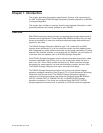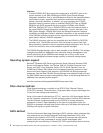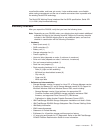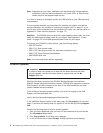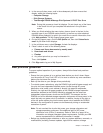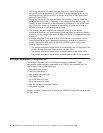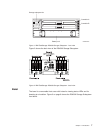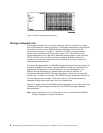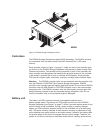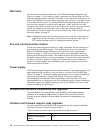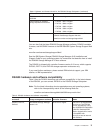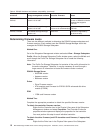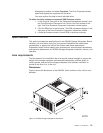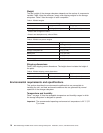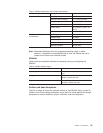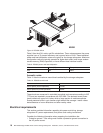
Controllers
The DS4500 Storage Subsystem supports RAID technology. The DS4500 contains
two removable units that each contain one RAID controller with 1 GB cache
memory.
Each controller, shown in Figure 1 on page 7, slides into one of two controller slots
on the front of the DS4500 Storage Subsystem and attaches to hosts through Fibre
Channel connections. Two handles lock the controller in place. Each controller slot
has a controller slot designation that identifies the physical location of the controller
in the chassis: controller slot A (top) or controller slot B (bottom). Each controller
CRU has ten indicator lights: one power, one fault, and eight status indicator lights.
Attention: The DS4500 controller units are not compatible with the controller units
from the DS4400 or FAStT500 Fibre Channel Storage subsystems. DS4500
controller units normally have the metallic gold latch handle. Do not mix the DS4500
controller units with IBM DS4400 or FAStT500 controller units in the same storage
subsystem units. The DS4500 controller units are also keyed to prevent them from
being mistakenly inserted in the non-supported storage subsystem units. Do not
force the controller units or the backplane might be damaged.
Battery unit
The battery unit CRU contains lead-acid, rechargeable batteries and a
battery-charger board. The battery unit CRU plugs into the front of the DS4500
Storage Subsystem (see Figure 1 on page 7) where it provides backup power to the
cache memory in both controllers. During a power outage, a properly charged
battery unit CRU maintains electrical current to the controllers for up to three days
with 1 GB cache memory installed. All data stored in memory is preserved as long
as the batteries can sustain power to the cache memory. However, the battery does
not provide power to the rest of the system during a power outage. Therefore, the
system is not able to write data to hard disk drives without a backup power source.
Figure 4. DS4500 Storage Subsystem airflow
Chapter 1. Introduction 9



